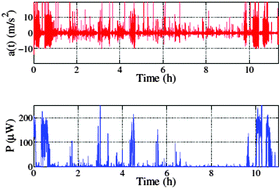Energy harvesting from human motion: materials and techniques
Abstract
Energy harvesting from human motion is a research field under rapid development. In this tutorial review we address the main physical and physico-chemical processes which can lead to energy generation, including electromagnetism, piezoelectricity, and electrostatic generation. Emphasis is put on the relationships among material properties and device efficiency. Some new and relatively less known approaches, such as triboelectric nanogeneration (TENG) and reverse electrowetting (REWOD), are reported in more detail.


 Please wait while we load your content...
Please wait while we load your content...